Skip to Content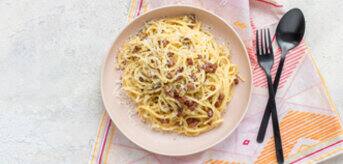


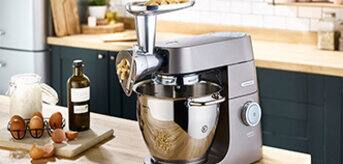
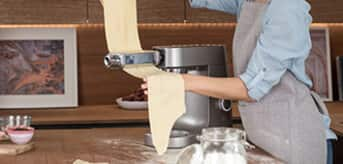
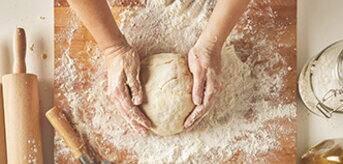
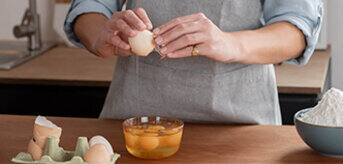
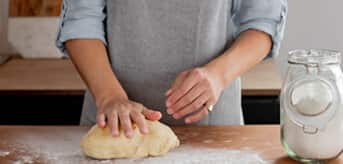
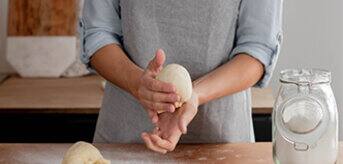
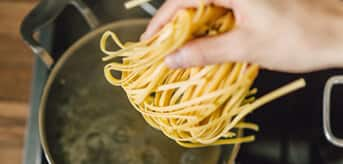

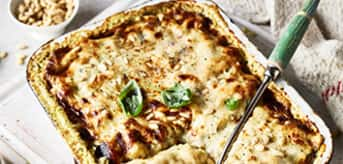
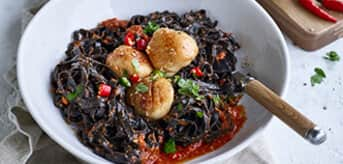
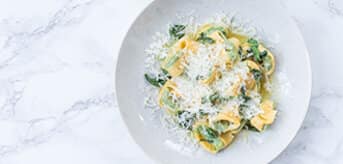
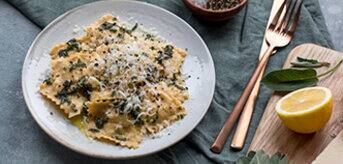
Nástavce pro výrobu těstovin







Vezměte prosím na vědomí, že vaše objednávka nemusí být doručena včas do Vánoc
Vezměte prosím na vědomí, že vaše objednávka nemusí být doručena včas do VánocExpresní přeprava zdarma při nákupu nad 620 kčBezplatné vrácení
Jak si doma vyrobit čerstvé těstoviny
Výroba vlastních domácích těstovin má něco do sebe. I když volba sušených (v obchodě zakoupených) těstovin není nikdy špatná, neexistuje nic, co by poskytlo stejný zážitek jako výroba čerstvých těstovin od samého začátku.
Tento průvodce vás uvede do světa čerstvých těstovin a poskytne vám potřebné ingredience a postupy, informace o skladování, vaření a odpovědi na některé časté otázky. Nabízíme také výběr chutných receptů, které můžete sami vyzkoušet, abyste mohli experimentovat s výrobou těstovin, jakmile zvládnete základy.
Tento průvodce vás uvede do světa čerstvých těstovin a poskytne vám potřebné ingredience a postupy, informace o skladování, vaření a odpovědi na některé časté otázky. Nabízíme také výběr chutných receptů, které můžete sami vyzkoušet, abyste mohli experimentovat s výrobou těstovin, jakmile zvládnete základy.
Proč dělat domácí těstoviny?
Výroba vlastních domácích těstovin je jednou z těch věcí, které se zpočátku mohou zdát, že vyžadují určité úsilí, nicméně mnozí se shodnou na tom, že jakmile se naučíte, jak na to, odměna vždy převáží.
Naučit se připravovat čerstvé těstoviny je pro každého gurmána nesmírně obohacující a zanechává to ve vás velký pocit hrdosti – zejména když vidíte, jak si členové vaší rodiny pochutnávají na misce s ravioli, tortelli nebo špagetami, které jste připravili.
Naučit se připravovat čerstvé těstoviny je pro každého gurmána nesmírně obohacující a zanechává to ve vás velký pocit hrdosti – zejména když vidíte, jak si členové vaší rodiny pochutnávají na misce s ravioli, tortelli nebo špagetami, které jste připravili.
Je zde také opravdové potěšení z procesu výroby. Je to jeden z těch relaxačních a terapeutických zážitků, díky nimž je vaření tak obohacující, a navíc si osvojíte celou řadu nových kuchařských dovedností.
Jakmile zvládnete základy, můžete začít více experimentovat a bavit se.
Kromě standardního receptu na těstoviny můžete být kreativní, protože domácí kuchaři používají různé přírodní ingredience, které těstoviny obarví do různých barev. Těstoviny jsou černé díky inkoustu z kalamárů, zelené díky špenátu, oranžové díky rajčatovému protlaku a zářivě fialové díky červené řepě.
Přidání těchto ingrediencí do těsta vám také umožní vyzkoušet různé chutě. Vyzkoušet můžete také:
Čerstvě nasekané bylinky, jako je bazalka, petržel nebo máta
Mleté koření, například kurkuma, chilli vločky nebo paprika
Pečené papriky
Kakaový prášek
Jakmile zvládnete základy, můžete začít více experimentovat a bavit se.
Kromě standardního receptu na těstoviny můžete být kreativní, protože domácí kuchaři používají různé přírodní ingredience, které těstoviny obarví do různých barev. Těstoviny jsou černé díky inkoustu z kalamárů, zelené díky špenátu, oranžové díky rajčatovému protlaku a zářivě fialové díky červené řepě.
Přidání těchto ingrediencí do těsta vám také umožní vyzkoušet různé chutě. Vyzkoušet můžete také:
Čerstvě nasekané bylinky, jako je bazalka, petržel nebo máta
Mleté koření, například kurkuma, chilli vločky nebo paprika
Pečené papriky
Kakaový prášek
Tím vaše kreativita nemusí končit, protože můžete vyzkoušet i různé tvary těstovin. Od dlouhých proužků tagliatelle nebo fettucine, až po složitější vzory fusilli, casarecce nebo silatelli.
Nástavce na těstoviny, kráječe a tvarovací nástavce na robot vám to mohou ještě více usnadnit a urychlit.
Nástavce na těstoviny, kráječe a tvarovací nástavce na robot vám to mohou ještě více usnadnit a urychlit.
Posledním důvodem, proč si vyrobit vlastní těstoviny je, že máte kontrolu nad použitými surovinami. Můžete tak experimentovat s různými druhy mouky nebo použít vejce z vaší oblíbené místní farmy. Pokud navíc přidáváte nové příchutě nebo barvy, můžete si některé z nich obstarat od důvěryhodného dodavatele nebo dokonce z vlastní zahrady.
Ingredience v domácích těstovinách
Když dojde na přípravu domácích těstovin, mají čerstvé těstoviny dvě skvělé vlastnosti – potřebujete pouze tři klíčové ingredience (mouku, vejce a sůl), které pravděpodobně už máte v kredenci nebo ledničce.
Různé recepty mají trochu odlišné požadavky, jak uvidíte u níže uvedených receptů, přičemž některé z nich vyžadují další volitelné přísady, jako je olivový olej (který může také pomoci spojit těsto) nebo krupice.
Pokud jde o mouku, některé recepty jednoduše používají hladkou mouku, zatímco jiné doporučují použít „typ 00“. Jedná se o jemnou bílou italskou mouku, která se používá speciálně pro výrobu čerstvých těstovin. Běžně se prodává ve velkých supermarketech, ale najdete ji i ve svém oblíbeném italském lahůdkářství nebo u online dodavatelů potravin.
Několik lidí také začíná experimentovat s mícháním mouky. Například při použití směsi mouky „00“ a semolinové mouky jsou těstoviny pevnější než při použití jemnější čisté mouky „00“. V závislosti na tom, jaký typ omáčky plánujete použít, můžete zkusit jinou kombinaci.
Různé recepty mají trochu odlišné požadavky, jak uvidíte u níže uvedených receptů, přičemž některé z nich vyžadují další volitelné přísady, jako je olivový olej (který může také pomoci spojit těsto) nebo krupice.
Pokud jde o mouku, některé recepty jednoduše používají hladkou mouku, zatímco jiné doporučují použít „typ 00“. Jedná se o jemnou bílou italskou mouku, která se používá speciálně pro výrobu čerstvých těstovin. Běžně se prodává ve velkých supermarketech, ale najdete ji i ve svém oblíbeném italském lahůdkářství nebo u online dodavatelů potravin.
Několik lidí také začíná experimentovat s mícháním mouky. Například při použití směsi mouky „00“ a semolinové mouky jsou těstoviny pevnější než při použití jemnější čisté mouky „00“. V závislosti na tom, jaký typ omáčky plánujete použít, můžete zkusit jinou kombinaci.
Zařízení na výrobu domácích těstovin
Stejně jako v mnoha jiných případech vaření i zde platí, že mnohé základní metody vyžadují pouze minimální vybavení, ale použití správného kuchyňského spotřebiče vše urychlí a usnadní.
K ruční výrobě domácích těstovin stačí velké prkénko, vidlička, váleček na těsto, opakovaně použitelná fólie a ostrý nůž.
V dalším kroku můžete použít mechanický stroj na výrobu těstovin, který vám pomůže těsto rozválet na požadovanou tloušťku.
Pro urychlení přípravy těsta je lepší použít food processor než vidličku.
A další možností, která vám opravdu pomůže těsto jednoduše připravit, je použití kuchyňského robotu. Nejenže urychlíte proces míchání těsta, ale k dispozici je také celá řada užitečných nástavců na těstoviny, včetně tvarovačů, válečků a kráječů.
Posledním volitelným vybavením je stojan na sušení těstovin. Ty jsou obvykle dřevěné a v kuchyni vypadají skvěle, když se na nich suší stuhy čerstvých těstovin.
V dalším kroku můžete použít mechanický stroj na výrobu těstovin, který vám pomůže těsto rozválet na požadovanou tloušťku.
Pro urychlení přípravy těsta je lepší použít food processor než vidličku.
A další možností, která vám opravdu pomůže těsto jednoduše připravit, je použití kuchyňského robotu. Nejenže urychlíte proces míchání těsta, ale k dispozici je také celá řada užitečných nástavců na těstoviny, včetně tvarovačů, válečků a kráječů.
Posledním volitelným vybavením je stojan na sušení těstovin. Ty jsou obvykle dřevěné a v kuchyni vypadají skvěle, když se na nich suší stuhy čerstvých těstovin.
Jak připravit těstoviny ve stojanovém mixéru
Při přípravě čerstvých těstovin pomocí kuchyňského robotu ušetříte čas i námahu a navíc budete mít v kuchyni méně nepořádku, než kdybyste je připravovali ručně.
Zde je uveden postup:
1. Nejprve nasaďte hnětací hák na kuchyňský robot a přidejte do mísy ingredience (v závislosti na receptu na těstoviny).
2. Poté použijte nastavení rychlosti 2 a míchejte asi 3 minuty. Hledáte směs, která vypadá drobivě, ale je přesto vlhká. Pokud se vám zdá příliš suché, přidejte lžíci nebo dvě vody, a pokud se vám zdá příliš lepivé, přidejte trochu mouky navíc.
3. Směs vyjměte z mísy, dejte ji na pomoučený velký vál a pak ji hněťte rukama, dokud nevznikne hladké těsto.
4. Rukama vytvarujte kouli, těsto zabalte a nechte ho odpočívat při pokojové teplotě alespoň 15 minut (i když to může být až 2 hodiny, pokud mezitím potřebujete dělat něco jiného).
5. Nyní je čas udělat z těsta pláty těstovin. Nejprve ho rozválejte válečkem na ploché oválné těsto. Poté vezměte zploštělý kotouč a protáhněte jej nástavcem kuchyňského robota na těstoviny, válečkem a změňte nastavení od 1 do 6 nebo 7, abyste dosáhli správné tloušťky (ta se obvykle pohybuje mezi 1–2 mm). Válení lze provádět ručně nebo pomocí ručního stroje, ale jakmile použijete nástavec na robot, zjistíte, jak je to jednodušší. Případně můžete pokračovat v ručním válení
6. Po vyválení plátů těstovin je možné je nakrájet na různé šířky a vytvořit z nich lasagne, špagety, trenette nebo fettuccine pomocí různých kráječů na těstoviny, nebo, pokud chcete, můžete krájet ručně. Lze z nich také připravit plněné těstoviny, jako jsou ravioli nebo tortellini.
7. Posledním krokem je sušení těstovin po dobu přibližně 30 minut pomocí stojanu na těstoviny nebo vytvořením „hnízd“.
1. Nejprve nasaďte hnětací hák na kuchyňský robot a přidejte do mísy ingredience (v závislosti na receptu na těstoviny).
2. Poté použijte nastavení rychlosti 2 a míchejte asi 3 minuty. Hledáte směs, která vypadá drobivě, ale je přesto vlhká. Pokud se vám zdá příliš suché, přidejte lžíci nebo dvě vody, a pokud se vám zdá příliš lepivé, přidejte trochu mouky navíc.
3. Směs vyjměte z mísy, dejte ji na pomoučený velký vál a pak ji hněťte rukama, dokud nevznikne hladké těsto.
4. Rukama vytvarujte kouli, těsto zabalte a nechte ho odpočívat při pokojové teplotě alespoň 15 minut (i když to může být až 2 hodiny, pokud mezitím potřebujete dělat něco jiného).
5. Nyní je čas udělat z těsta pláty těstovin. Nejprve ho rozválejte válečkem na ploché oválné těsto. Poté vezměte zploštělý kotouč a protáhněte jej nástavcem kuchyňského robota na těstoviny, válečkem a změňte nastavení od 1 do 6 nebo 7, abyste dosáhli správné tloušťky (ta se obvykle pohybuje mezi 1–2 mm). Válení lze provádět ručně nebo pomocí ručního stroje, ale jakmile použijete nástavec na robot, zjistíte, jak je to jednodušší. Případně můžete pokračovat v ručním válení
6. Po vyválení plátů těstovin je možné je nakrájet na různé šířky a vytvořit z nich lasagne, špagety, trenette nebo fettuccine pomocí různých kráječů na těstoviny, nebo, pokud chcete, můžete krájet ručně. Lze z nich také připravit plněné těstoviny, jako jsou ravioli nebo tortellini.
7. Posledním krokem je sušení těstovin po dobu přibližně 30 minut pomocí stojanu na těstoviny nebo vytvořením „hnízd“.
Jak vyrábět těstoviny ručně
Alternativou k použití kuchyňskému robotu je ruční příprava těstovin.
Postupujte takto:
1. Vezměte mouku a vytvořte na prkénku nebo pracovní ploše hromádku. Uprostřed udělejte důlek a do mouky přidejte zbývající přísady a vidličkou rozšlehejte vejce.
2. Suroviny spojujte rukama, dokud nevznikne hrubá koule těsta.
1. Vezměte mouku a vytvořte na prkénku nebo pracovní ploše hromádku. Uprostřed udělejte důlek a do mouky přidejte zbývající přísady a vidličkou rozšlehejte vejce.
2. Suroviny spojujte rukama, dokud nevznikne hrubá koule těsta.
3. Hněťte těsto, dokud nebude hladké – to může trvat asi 8–10 minut, což je déle, než kdybyste použili kuchyňský robot.
4. Těsto zabalte a nechte ho asi 30 minut odpočívat při pokojové teplotě.
4. Těsto zabalte a nechte ho asi 30 minut odpočívat při pokojové teplotě.
5. Těsto nakrájejte na kousky (podle toho, kolik jste ho připravili), pak každý z nich vezměte a pomocí válečku jej zploštěte na tloušťku 1 až 2 mm.
6. Ostrým nožem je nakrájejte na různě široké „stužky“ podle typu těstovin, které chcete připravit (například tagliatelle, pappardelle nebo fettuccine). Poprašte je moukou, aby se nelepily.
7. Nakonec je třeba těstoviny usušit pomocí speciálního stojanu nebo vytvořením jednotlivých „hnízd“.
6. Ostrým nožem je nakrájejte na různě široké „stužky“ podle typu těstovin, které chcete připravit (například tagliatelle, pappardelle nebo fettuccine). Poprašte je moukou, aby se nelepily.
7. Nakonec je třeba těstoviny usušit pomocí speciálního stojanu nebo vytvořením jednotlivých „hnízd“.
Jak uvařit čerstvé těstoviny
Teď, když máte těstoviny vyrobené, je čas je začít vařit, abyste si na nich mohli pochutnat.
Při vaření čerstvých těstovin je třeba si uvědomit, že ve srovnání se sušenými těstovinami je doba vaření mnohem kratší.
V závislosti na tloušťce mohou být těstoviny uvařeny již za 15 sekund, přičemž mnoho druhů těstovin by mělo být „al dente“, na což byste se měli zaměřit, přibližně za 2–3 minuty.
Těstoviny uvaříte tak, že je vložíte do velkého hrnce s osolenou vroucí vodou. Přidejte těstoviny, jemně promíchejte a znovu je přiveďte k varu. Poté načasujte požadovanou délku vaření.
Po uvaření těstoviny ihned slijte a co nejdříve podávejte.
Při vaření čerstvých těstovin je třeba si uvědomit, že ve srovnání se sušenými těstovinami je doba vaření mnohem kratší.
V závislosti na tloušťce mohou být těstoviny uvařeny již za 15 sekund, přičemž mnoho druhů těstovin by mělo být „al dente“, na což byste se měli zaměřit, přibližně za 2–3 minuty.
Těstoviny uvaříte tak, že je vložíte do velkého hrnce s osolenou vroucí vodou. Přidejte těstoviny, jemně promíchejte a znovu je přiveďte k varu. Poté načasujte požadovanou délku vaření.
Po uvaření těstoviny ihned slijte a co nejdříve podávejte.
Skladování čerstvých těstovin
Jak už název napovídá, čerstvé těstoviny je nejlepší konzumovat co nejdříve po jejich přípravě. Měli byste je dát do vzduchotěsné nádoby a uvařit do dvou dnů.
Dobrou zprávou je, že nevařené čerstvé těstoviny můžete až na měsíc zmrazit.
Po uvaření je pravděpodobné, že budou dobré i druhý den, pokud zjistíte, že jste je nesnědli všechny nebo jste jich udělali příliš mnoho na jedno jídlo.
Dobrou zprávou je, že nevařené čerstvé těstoviny můžete až na měsíc zmrazit.
Po uvaření je pravděpodobné, že budou dobré i druhý den, pokud zjistíte, že jste je nesnědli všechny nebo jste jich udělali příliš mnoho na jedno jídlo.
Jak už název napovídá, čerstvé těstoviny je nejlepší konzumovat co nejdříve po jejich přípravě. Měli byste je dát do vzduchotěsné nádoby a uvařit do dvou dnů. Dobrou zprávou je, že nevařené čerstvé těstoviny můžete až na měsíc zmrazit. Po uvaření je pravděpodobné, že budou dobré i druhý den, pokud zjistíte, že jste je nesnědli všechny nebo jste jich udělali příliš mnoho na jedno jídlo.
Výroba vlastních čerstvých těstovin znamená, že se můžete vrátit k některým svým oblíbeným jídlům nebo začít vytvářet vlastní oblíbené rodinné pokrmy. Můžete si také vyzkoušet své tvůrčí schopnosti s mnoha příchutěmi. A tato kreativita je ještě více vzrušující, když si uvědomíte, že existuje obrovské množství receptů na čerstvé těstoviny, které můžete vyzkoušet a vychutnat si je.
Recepty na těstoviny jsou flexibilní a nabízejí mnoho bezmasých variant, od jednoduchých klasik, jako jsou boloňské špagety, až po složitější tortellini s prosciuttem, ricottou a parmazánem a hráškovým pestem.
Zde je malý výběr našich oblíbenců:
Výroba vlastních čerstvých těstovin znamená, že se můžete vrátit k některým svým oblíbeným jídlům nebo začít vytvářet vlastní oblíbené rodinné pokrmy. Můžete si také vyzkoušet své tvůrčí schopnosti s mnoha příchutěmi. A tato kreativita je ještě více vzrušující, když si uvědomíte, že existuje obrovské množství receptů na čerstvé těstoviny, které můžete vyzkoušet a vychutnat si je.
Recepty na těstoviny jsou flexibilní a nabízejí mnoho bezmasých variant, od jednoduchých klasik, jako jsou boloňské špagety, až po složitější tortellini s prosciuttem, ricottou a parmazánem a hráškovým pestem.
Zde je malý výběr našich oblíbenců:
Carbonara
Dalším klasickým receptem na těstoviny jsou špagety alla carbonara. Čerstvé špagety jsou kombinovány s pikantním parmezánem, uzenou pancettou a vejci a navíc jsou ochuceny česnekem, černým pepřem a olivovým olejem.
Získat recept
Získat recept
Rolované kuřecí lasagne s pestem
Toto je recept na lasagne s určitým rozdílem. Často používaná omáčka ragú z hovězího masa je zde nahrazena hlavními ingrediencemi z kuřecího masa, máslové dýně a zeleného pesta.
Získat recept
Získat recept
Těstoviny s inkoustem z olihní a hřebenatkami
Tento recept vyniká nejen krásnou kombinací hřebenatek, chilli, česneku a olivového oleje, ale také zářivě černou barvou těstovin díky inkoustu z olihní. Pro tento pokrm se hodí těstoviny fettucini.
Získat recept
Získat recept
Tortellini, špenát a ricotta
Recept pro milovníky plněných těstovin s oblíbenou kombinací špenátu a sýru ricotta. To, co tento pokrm skutečně oživí, je nádech strouhaného muškátového oříšku a nasekaných šalvějových lístků.
Získat recept
Získat recept
Krabí ravioli
Další recept s balenými těstovinami, tentokrát však na ravioly s náplní z bílého krabího masa, ricotty a strouhanky. Chutě zahrnují citron, petržel, kopr a šalvěj.
Získat recept
Získat recept
Časté dotazy k výrobě těstovin
Doufáme, že tento článek vám již poskytl mnoho informací o výrobě vlastních těstovin, nicméně níže uvádíme přehled nejčastějších otázek, které vás mohou napadnout.
Která mouka je nejlepší pro přípravu těstovin?
Všeobecně se uznává, že nejlepší mouka pro výrobu čerstvých těstovin je „00“.
Jedná se o bílou mouku a dvě nuly označují hrubost struktury – jedna nula („0“) označuje hrubou mouku a tři nuly („000“) hladkou mouku, přičemž „00“ je mezi nimi.
Jak již bylo zmíněno výše, mouku „00“ lze dnes běžně sehnat ve velkých supermarketech, italských lahůdkářstvích, specializovaných obchodech s potravinami a v internetových obchodech s potravinami.
Jedná se o bílou mouku a dvě nuly označují hrubost struktury – jedna nula („0“) označuje hrubou mouku a tři nuly („000“) hladkou mouku, přičemž „00“ je mezi nimi.
Jak již bylo zmíněno výše, mouku „00“ lze dnes běžně sehnat ve velkých supermarketech, italských lahůdkářstvích, specializovaných obchodech s potravinami a v internetových obchodech s potravinami.
Měli byste do těsta na čerstvé těstoviny použít vejce nebo vodu?
Pokud nevyrábíte těstoviny vhodné pro vegany, je lepší použít vejce, které těstovinám dodá vlhkost.
Vejce pomáhají vázat lepek, který zajišťuje dobrou strukturu a tvar, a tuk, který přispívá k tomu, že je těsto hladké a hedvábné.
Existuje několik receptů na čerstvé těstoviny, které místo vajec používají vodu, což zřejmě pochází z dob přídělového systému po druhé světové válce, kdy byla vejce nedostatkovým zbožím.
Vejce pomáhají vázat lepek, který zajišťuje dobrou strukturu a tvar, a tuk, který přispívá k tomu, že je těsto hladké a hedvábné.
Existuje několik receptů na čerstvé těstoviny, které místo vajec používají vodu, což zřejmě pochází z dob přídělového systému po druhé světové válce, kdy byla vejce nedostatkovým zbožím.
Výběr správného tvaru těstovin
Jednou ze skvělých vlastností těstovin je obrovská rozmanitost tvarů, které se z nich dají vyrobit. V kuchyni si tak můžete užít hodiny zábavy při experimentování.
Abyste správný tvar těstovin přizpůsobili správné omáčce, je třeba dodržet několik obecných zásad:
| Tvar těstovin | Typ těstovin | Ideální omáčka |
|---|---|---|
| Dlouhé a tenké | Špagety, linguine, vermicelli, bucatini, vlasové nudle, reinette a fideo | Rajčatové, smetanové omáčky nebo omáčky na bázi olejů |
| dlouhé proužky | Lasagne, pappardelle, tagliatelle, fettucini | Bohaté masové omáčky nebo smetanové omáčky |
| Trubičky | Penne, rigatoni, makaróny, tubini, penne rigate, ziti | Zeleninové omáčky, boloňská omáčka, ragú |
| Vrtulky | Fusilli, rotini, campanelle, gemelli | Lehké a hladké omáčky, včetně pesta |
| Mušličky | Conchiglie, kolínka, cavatelli | Silné smetanové nebo masové omáčky |
| Plněné těstoviny | Tortellini, ravioli nebo tortelloni | Lehké omáčky s máslem a olejem |
| Mini tvary | Orzo, anelli, orecchiette, tripolini | Polévky, nákypy, dušené maso nebo těstovinový salát |
Nástavce pro výrobu těstovin
Lze zmrazit nevařené čerstvé těstoviny?
Nevařené čerstvé těstoviny můžete v případě potřeby zmrazit.
Jakmile je vyrobíte, nechte je asi 15–30 minut oschnout a poté je uložte do vzduchotěsné nádoby do mrazáku. Případně můžete těsto před válením a krájením zmrazit a připravit z něj jednoduché, ale úžasné jídlo, kdykoli budete potřebovat.
Stejně jako většinu mražených potravin je budete chtít spotřebovat co nejdříve, takže mnozí lidé doporučují, aby se nemrazily déle než měsíc.
Můžete je rozmrazovat několik hodin v lednici, i když někteří lidé je vaří ze zmrazeného stavu. Jen sledujte dobu vaření, protože bude potřebovat trochu více času, ale nechcete je převařit.
Jakmile je vyrobíte, nechte je asi 15–30 minut oschnout a poté je uložte do vzduchotěsné nádoby do mrazáku. Případně můžete těsto před válením a krájením zmrazit a připravit z něj jednoduché, ale úžasné jídlo, kdykoli budete potřebovat.
Stejně jako většinu mražených potravin je budete chtít spotřebovat co nejdříve, takže mnozí lidé doporučují, aby se nemrazily déle než měsíc.
Můžete je rozmrazovat několik hodin v lednici, i když někteří lidé je vaří ze zmrazeného stavu. Jen sledujte dobu vaření, protože bude potřebovat trochu více času, ale nechcete je převařit.
Jste připraveni vyrobit si vlastní těstoviny? Začněte značkou Kenwood.
Výroba vlastních čerstvých těstovin je jednou z těch dovedností, které jsou nesmírně užitečné a umožňují vám experimentovat s širokou škálou tvarů, barev a chutí.
Zejména zpočátku je třeba se trochu učit, ale používání zařízení, jako je kuchyňský robot, který celý proces usnadňuje a urychluje.
K dispozici je celá řada zajímavých receptů, které můžete vyzkoušet, a hlavně si na nich pochutnat. K dalším lákadlům patří:
Tagliatelle z cukety a rajčat
Zejména zpočátku je třeba se trochu učit, ale používání zařízení, jako je kuchyňský robot, který celý proces usnadňuje a urychluje.
K dispozici je celá řada zajímavých receptů, které můžete vyzkoušet, a hlavně si na nich pochutnat. K dalším lákadlům patří:
Tagliatelle z cukety a rajčat
Doručení
Doručení do 4 pracovních dnů
Záruka vrácení peněz
Bezplatná 30 denní lhůta pro vrácení zboží
Platby
Bezpečné platby
Klarna
Zaplať ve 3 platbách
Doručení
Doručení do 4 pracovních dnů
Záruka vrácení peněz
Bezplatná 30 denní lhůta pro vrácení zboží
Platby
Bezpečné platby
Klarna
Zaplať ve 3 platbách
Nechte se inspirovat a zůstaňte v obraze
s našimi zprávami a nabídkami přímo ve vaší schránce.